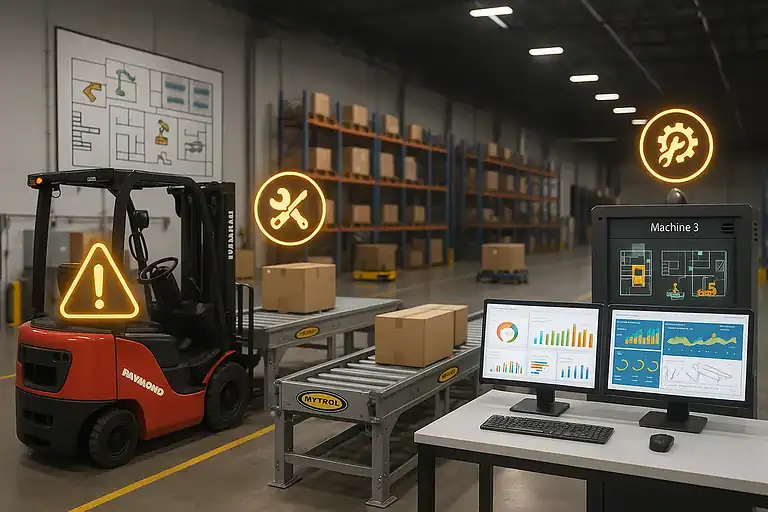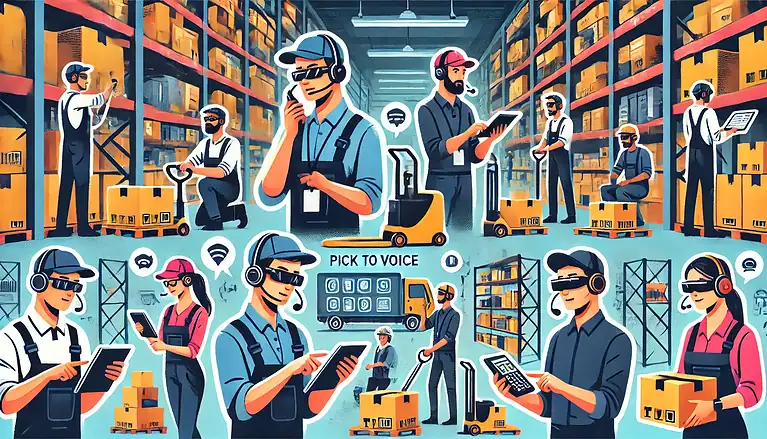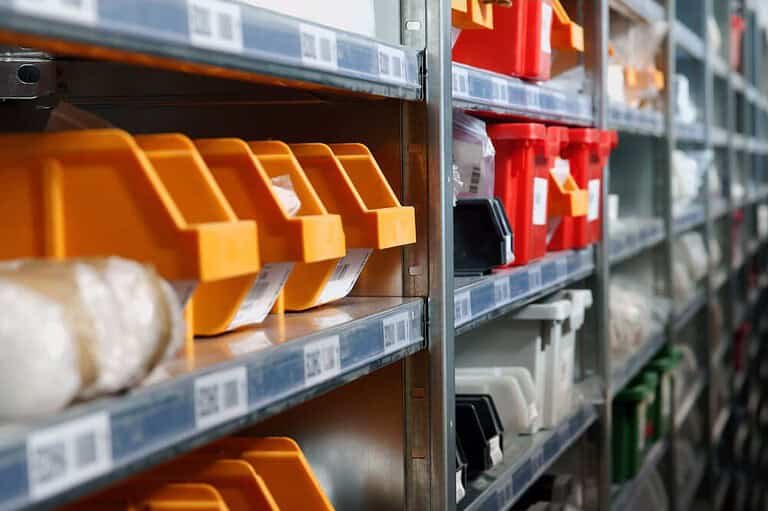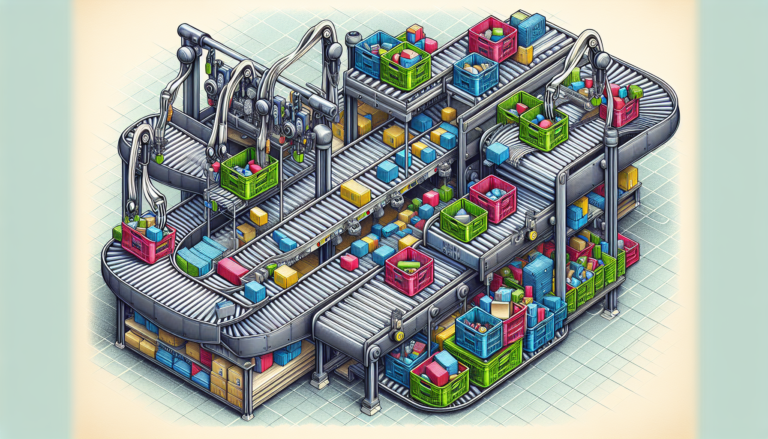9 Powerful Zone Picking Strategies to Upgrade Your Warehouse
Imagine slashing your warehouse picking times in half while simultaneously reducing errors and worker fatigue. That’s the power of zone picking when done right. So let’s discuss 9 powerful zone picking strategies you should implement.

Cut your warehouse picking times in half and reduce errors and fatigue. That’s what zone picking can do when done correctly. So let’s get into 9 zone picking strategies you should be using.
In the world of warehouse management, speed is everything. With e-commerce growing and customer delivery expectations through the roof, warehouses have never been under more pressure to get it right.
Enter zone picking – the secret to how top warehouses are fulfilling orders.
Zone picking isn’t just a buzzword; it’s a proven way to increase pick rates, reduce travel time, and reduce errors.
Whether you have a small DC or a massive fulfillment center, understanding and implementing zone-picking strategies can be the difference between being competitive in today’s market.
This guide will cover zone picking, what it is, why it matters, and how you can use various strategies to boost your warehouse productivity.
From the basics to the advanced, we’ve got you covered. So, let’s get started and turn your warehouse into a picking machine.
What is Zone Picking?

Zone picking is a warehouse order fulfillment strategy that divides the picking area into zones and assigns each picker to a zone. Instead of walking the entire warehouse to pick an order, pickers stay in their zone and only pick items from their zone.
Here’s how it works:
The warehouse is divided into zones, often by product type, size, or picking frequency.
Each picker is assigned to a zone and becomes an expert in that area.
When an order comes in, it’s split into multiple pick tasks based on the zones where the items are located.
Pickers in each zone pick the items for their part of the order.
The partial orders are consolidated at a central location to create the full order.
Compared to other picking methods:
To understand zone picking better let’s compare it to other picking methods:
Discrete Order Picking: A single picker picks an entire order, walking the warehouse. This method is simple but not efficient for large warehouses or complex orders.
Batch Picking: Multiple orders are grouped, and a picker picks all the items for all the orders in one go. This reduces travel time but can cause sorting confusion.
Wave Picking is similar to batch picking, but orders are released in timed waves, often in line with outbound shipping schedules.
Zone Picking: As above, pickers are assigned to a zone.
Zone picking is all about maximizing picker efficiency and minimizing travel time, especially in larger warehouses or with many SKUs.
By understanding zone picking, you can see how this can benefit your operation.
Benefits of Zone Picking

Increased Efficiency
Reduced travel time: Pickers stay in their zone and no longer walk around the warehouse.
Faster pick rates: Familiarity with a zone means pickers can work faster and more confident.
Product placement: High-demand items can be placed in the zone for easy access.
Reduced Congestion
Less traffic: Pickers are confined to their zone, so there is less foot traffic.
Improved safety: Fewer moving pickers and equipment means less chance of accidents.
Easier social distancing: Especially relevant in post-pandemic operations.
Improved Accuracy
Focused attention: Working in a smaller area helps pickers stay concentrated.
Zone expertise: Pickers become familiar with the zone’s layout and products.
Reduced fatigue: Less walking and searching means fewer errors from tiredness.
Lower Training Requirements
Simpler onboarding: New pickers only need to learn about their zone, not the whole warehouse.
Faster ramp-up time: A reduced learning curve means new hires can get productive quicker.
Specialization: Pickers can become experts in the products in their zone.
Scalability
Can be expanded: Add more zones as the warehouse grows.
Flexible staffing: Zones can be combined or split based on volume and staff available.
Inventory Control
Easier cycle counting: Inventory checks are more manageable within a zone.
Better stock visibility: Zone managers can see inventory levels.
Order Prioritization
Time-sensitive handling: Zones with perishable or high-priority items can be picked first.
Multi-order processing: Different parts of an order can be picked up in different zones simultaneously.
Cost Savings
Less equipment required: Fewer pickers moving around the warehouse means less need for forklifts.
Lower error costs: Improved accuracy means fewer returns and less rework.
Employee Satisfaction
Reduced physical strain: Less walking and heavy lifting means higher job satisfaction and retention.
Sense of ownership: Pickers feel responsible for their zone and often take more pride in their work.
Data-Driven Optimization
Performance metrics: It is easier to track and compare zone performance.
Continuous improvement: Data from zone performance can be used to refine layout and process.
By utilizing these benefits, warehouses can speed up order fulfillment, increase customer satisfaction, and use resources more efficiently.
But remember to plan and implement the right zone-picking strategy for your warehouse.
Types of Zone Picking Strategies

Warehouses come in all shapes and sizes, and so do zone picking strategies. Let’s break down the main approaches:
- Basic Zone Picking: This is your bread-and-butter strategy. Picture a relay race but with boxes instead of batons. Each picker grabs what they need from their zone and then passes the order to the next zone. It’s straightforward but can be slow for large orders.
- Wave Picking: Surf’s up! Wave picking releases orders in waves. It’s like throwing a handful of pebbles into a pond – each ripple represents a batch of orders hitting different zones simultaneously. Great for balancing workloads, but watch out for bottlenecks at the consolidation point.
- Batch Zone Picking: Think of this as a zone-picking potluck. Pickers collect items for multiple orders at once within their zone. It’s efficient but requires a keen eye during sorting to avoid mix-ups. Pro tip: color-coded totes can be a lifesaver here.
- Progressive Zone Picking: This is the express lane of zone picking. Orders move from one zone to the next, picking up items as they go. It’s fast and reduces handling, but one slow zone can gum up the work. Keep an eye on those bottlenecks!
- Pick and Pass: This is similar to progressive picking but with a twist. Orders zig-zag through the warehouse, hitting only the zones they need. It’s like a game of hot potato—each zone does its part and then quickly passes the order along.
- Zone Batch Picking: This hybrid approach combines zone and batch picking. Pickers work on multiple orders within their zone, but orders don’t move until complete. It’s efficient but requires robust tracking to ensure all parts of an order come together correctly.
- Dynamic Zone Picking: The chameleon of picking strategies. Zones flex and change based on order volume, worker availability, or product demand. It’s adaptable but needs a smart warehouse management system to pull off.
- Parallel Zone Picking: Imagine multiple order pickers working on the same order simultaneously in different zones. It’s fast but requires ninja-level coordination at the packing stage.
It’s not a one-size-fits-all. It depends on your warehouse layout, product mix, order profiles, and season. Many warehouses use a combination of these strategies and switch gears as needed.
Remember, the best zone-picking strategy is the one that makes your pickers happy and your customers happy with fast delivery. It might take some trial and error, but finding your zone-picking rhythm will turn your warehouse from a confusing mess into a well-oiled machine.
Factors to Consider When Implementing Zone Picking

Warehouse Layout
Your warehouse layout is like a game board – it sets the rules. Consider:
Aisle width and length
Rack heights and types
Traffic flow
Receiving and shipping areas
Pro tip: Don’t be afraid to move things around. Sometimes, moving a few racks will make all the difference.
Product Characteristics
Not all products are created equal. Think about:
Size and weight variations
Fragility
Temperature requirements
Fast-movers vs slow-movers
Remember: Putting your bread and butter items in easy-to-reach locations can shave seconds off each pick. Those seconds add up!
Order Profiles
Know thy orders. Analyze:
Average order size
Product combinations
Rush orders
Seasonal fluctuations
Heads up: If you’re an e-commerce business, your order profile differs greatly from that of a B2B distributor. One size doesn’t fit all.
Labor Availability
Your team is the heart of your operation. Consider:
Skill levels of your workforce
Training requirements
Peak vs off-peak staffing needs
Ergonomics and worker comfort
Remember: Happy pickers are productive pickers. Design your zones for your team.
Technology Integration
Tech can be your best friend or worst enemy. Consider:
Your current Warehouse Management System (WMS) capabilities
Automation (conveyor belts, robotics)
Pick-to-light or voice-picking systems
Mobile device compatibility
Pro tip: Don’t try to eat more tech than you can chew. Sometimes, a simple barcode scanner beats a fancy but finicky robot.
Storage Systems
Your storage setup can make or break your zone-picking strategy:
Pallet racking vs shelving
Carton flow racks for fast-movers
Mezzanines for space optimization
Automated Storage and Retrieval Systems (AS/RS)
Pro tip: Sometimes investing in the right storage system pays for itself in picking efficiency.
Budget Constraints
Money talks, but it shouldn’t have the only say:
Initial implementation costs
Ongoing maintenance expenses
Potential ROI timeline
Scalability for future growth
Remember: The cheapest option isn’t always the most cost-effective in the long run.
Regulatory Compliance
Don’t let bureaucracy trip you up. Consider:
Industry regulations (e.g., pharma, food)
Safety standards
Environmental considerations
Pro tip: Build compliance into your strategy from the beginning. It’s easier than retrofitting later.
Zone picking isn’t just about drawing lines on a warehouse floor. It’s a delicate balance of many factors, each important to your success.
Take the time to consider these carefully. Your future self (and your bottom line) will thank you.
Zone Picking Best Practices
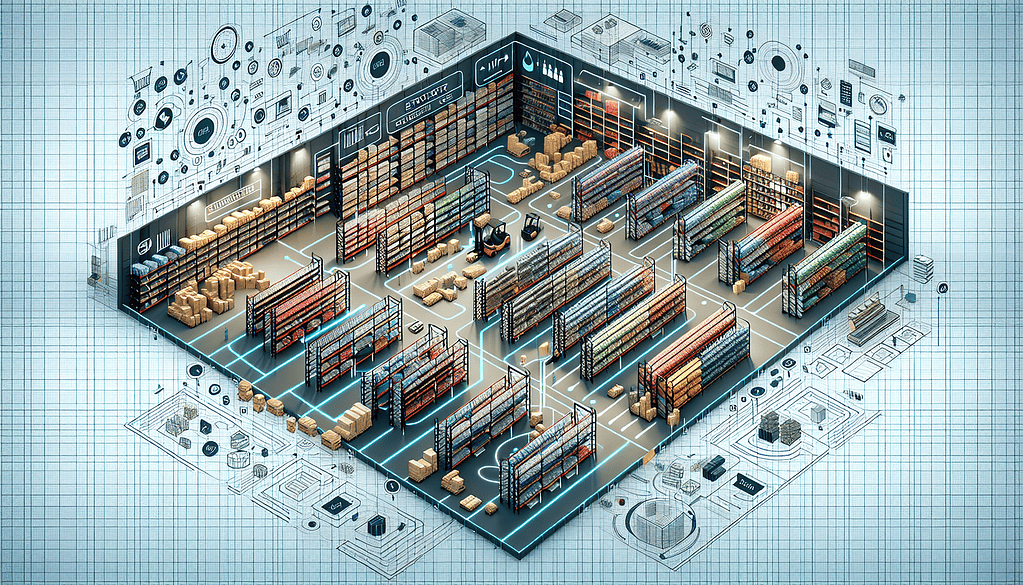
Zone Size
Think Goldilocks – not too big, not too small.
Keep zones busy without overwhelming pickers.
Consider product velocity. Fast-movers might need smaller, more targeted zones.
Consider physical layout. Natural barriers like walls or aisles can be zone boundaries.
Remember: Flexibility is key. Be prepared to resize zones as you figure out what works.
Balance Workload Across Zones
No one likes a traffic jam.
Spread popular items across zones to avoid bottlenecks.
Use historical data to predict busy areas and adjust accordingly.
Consider a dynamic zoning system that adjusts daily or seasonally.
Pro tip: Cross-train pickers so they can float between zones during peak times.
Technology
The right tech can turbocharge your picking.
Invest in a WMS that can handle zone picking.
Pick-to-light for high-volume areas.
Mobile scanners or tablets for real-time updates and less paper.
Voice-picking for hands-free.
Pro tip: Don’t get blinded by the shiny object. Choose tech that fits your needs and budget.
Train Staff
Your team is your greatest asset. Invest in them.
Develop zone-specific training programs.
Create visual guides for product locations and picking procedures.
Implement a buddy system for new pickers.
Update training as processes change.
Remember: A well-trained team isn’t just more efficient—it’s also happier and more likely to stay.
Slotting
Put the right stuff in the right place.
Use ABC analysis to determine product placement.
Keep fast-movers at ergonomic heights.
Group similar products together for picking.
Review and adjust slotting as demand patterns change.
Note: Good slotting can reduce travel time and increase picks per hour.
Metrics
You can’t improve what you don’t measure.
Set realistic KPIs for each zone and overall picking.
Track units per hour, accuracy, and distance traveled.
Use data visualization to spot trends and issues.
Share metrics with your team to create competition and improvement.
Pro tip: Celebrate wins and use failures as learning opportunities.
Consolidation
The last piece.
Design a consolidation area where orders from different zones come together.
Use clear labeling and sorting to prevent mistakes.
Automate for high volume.
Quality check at consolidation.
Remember: A good consolidation process will improve your zone picking.
Continuous Improvement
There’s always more work.
Ask your pickers for feedback.
Stay current with industry trends and technology.
Be willing to try new things.
Audit regularly to find areas to improve.
Last thought: The best zone-picking systems evolve. What works today may need to be tweaked tomorrow.
Implementing these best practices isn’t a one-time task – it’s an ongoing refinement and optimization process. Keep your eyes open, your mind flexible, and your team engaged. That’s the secret sauce to zone-picking.
Zone Picking Challenges and Solutions

Bottlenecks
- Problem: Bottlenecks can slow down an operation, like rush-hour traffic. We’ve covered this topic in more depth here, but for a short explanation, read on.
- Solutions: Identify choke points through data analysis and observation, redistribute popular items across multiple zones, implement dynamic zone assignments during peak times, use buffer zones to absorb temporary overflows
- Pro tip: Sometimes, the solution is as simple as widening an aisle or adding a second picking cart.
Uneven Workload Distribution The Problem
Problem: Some pickers sit idle while others are overwhelmed. That’s a recipe for inefficiency.
Solutions: Analyze pick data regularly to balance zone workloads, implement floating pickers to help in busy zones, use ABC analysis to distribute high-demand items, consider pick-and-pass systems for more even distribution
Remember: Perfect balance is a myth, but you can get close with constant tweaking and picker education.
Consolidation Issues
Problem: When pieces of an order are scattered across zones, bringing them together is like herding cats.
Solutions: Invest in a robust sorting system at consolidation, use clear, color-coded labels for easy identification, use barcode scanning at each consolidation step, and consider a conveyor for high-volume
Note: A good consolidation area can be a big win for overall efficiency.
Technology Integration Issues
Problem: Chaos ensues when your new WMS doesn’t play nicely with your existing systems.
Solutions: Test new technology for compatibility before buying, plan for enough training and transition time, have a plan for system downtime, and start with pilot programs before full rollout
Pro tip: Sometimes, a simple solution that works is better than a complex one that doesn’t.
Picker Fatigue and Errors
Problem: Tired pickers make mistakes, and mistakes cost money.
Solutions: Design ergonomic picking stations to reduce physical strain, job rotation to add variety to tasks, pick-to-light to reduce mental fatigue, regular breaks, and a comfortable break area
Remember: Your pickers are human, not robots. Treat them well, and they’ll return the favor with productivity.
Inventory Accuracy Issues
Problem: When your system says you have it, but the selector can’t find it, frustration (and inefficiency) follows.
Solutions: Conduct regular cycle counts, especially in high-turnover zones, provide real-time inventory updates through mobile devices, use RFID for automated inventory tracking, and train pickers to report discrepancies immediately.
Pro tip: Good inventory management is the foundation of zone picking. Don’t neglect it.
Seasonal Changes
Problem: Your perfectly balanced system goes haywire during holiday rushes or seasonal peaks.
Solutions: Develop flexible zone configurations that can expand or contract, cross-train employees to handle multiple zones and tasks, use historical data to predict and prepare for seasonal shifts, temporary storage for seasonal inventory
Note: Seasonal challenges are predictable. Use that to your advantage.
Communication Breakdowns
Problem: When zones operate in silos, efficiency goes away.
Solutions: Centralized communication system for all pickers, visual management tools like dashboards for real-time information, regular team meetings to align and share updates, open feedback channels between pickers and management
Remember: Good communication can prevent problems before they become problems.
Addressing these issues can turn your zone-picking operation into a great operation. It’s not about avoiding problems altogether (that’s impossible) but about having the tools and processes to solve them quickly.
Technology and Tools for Zone Picking
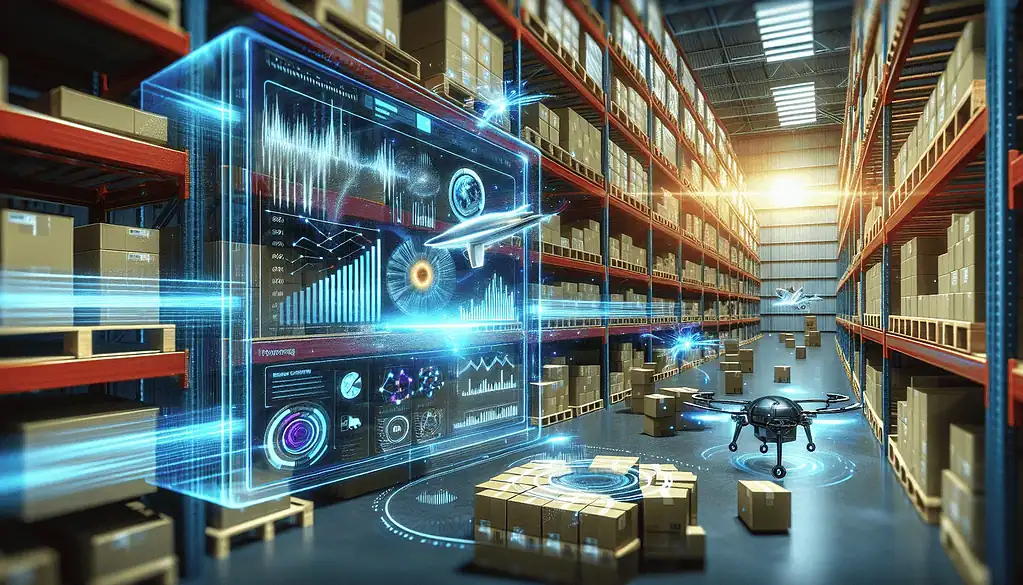
Warehouse Management Systems (WMS)
A good WMS can:
Assign zones and order routing
Real-time inventory updates
Performance reports and analytics
Integrate with other warehouse technology
Key point: Choose a WMS that can scale with your business. You don’t want to outgrow your system in a year.
Pick-to-Light
Lights tell pickers where to go
Reduces errors and training time
It is especially useful in high-density areas
Can speed up picking time
Pro tip: While these work well, they can be expensive. Do a cost-benefit analysis before you buy.
Voice-Directed Picking
Pickers receive audio instructions through a headset
Confirm picks verbally, update system in real time
Reduces paper and keeps hands free for picking
Can improve accuracy and speed
Note: This tech excels in areas where reading labels is tough.
Mobile Scanning Devices
Scan barcodes for accurate picking and inventory updates
Real-time information on the go
Ruggedized for a warehouse environment
Can include image capture for damage documentation
Note: Ensure your Wi-Fi infrastructure supports these devices throughout your warehouse.
Automated Storage and Retrieval Systems (AS/RS)
Robotic systems that store and retrieve items
Can work in very narrow or high aisles
Increases storage density and picking accuracy
Reduces labor costs and improves safety
Word of caution: These systems require a big upfront investment. Make sure your volume justifies the cost.
Conveyor Systems
Move products between zones efficiently
Can integrate with sortation systems for easy consolidation
Reduces manual handling and associated errors
Various types (belt, roller, overhead)
Key point: Design your conveyor system to be flexible. Your needs will change over time.
Wearable Technology
Smart glasses for visual picking instructions
Wrist-mounted terminals for scanning and data entry
Exoskeletons for reducing physical strain in heavy-lifting areas
Thought to consider: While cool, ensure this tech adds value before investing. Sometimes, simpler is better.
Artificial Intelligence and Machine Learning
Predictive analytics for demand forecasting
Dynamic zone reallocation based on real-time data
Continuous pick path optimization
Anomaly detection for early problem detection
Note: AI is a powerful tool that needs good data to work with. Make sure your basics are solid first.
Internet of Things (IoT) Sensors
Monitor environmental conditions (temperature, humidity)
Track asset location and utilization
Predictive maintenance for equipment
Real-time visibility into warehouse operations
Pro tip: Start small with IoT. Implement it in high-priority areas first, then expand as you see results.
Drones for Inventory Management
Aerial inventory counts
Access hard-to-reach areas
Reduce time and labor for cycle counts
Improve safety by reducing high-reach equipment need
Note: Indoor drone regulations are still evolving. Stay up to date with the latest requirements.
The key to zone-picking technology is understanding your specific needs and challenges. Not every new gadget is right for your operation. Focus on technologies that solve real problems and add real value.
Remember, even the best technology is only as good as its users. Invest in proper training and change management to get your team using these tools.
Case Studies: Zone Picking in Action

E-commerce Giant Revamps Distribution Center
Company: Large online retailer
Problem: Order fulfillment speed during peak seasons was a challenge
Solution: Implemented dynamic zone picking, installed pick-to-light in high-volume areas, and used AI for real-time zone reallocation based on order patterns
Results: 35% increase in picking speed, 50% reduction in errors, 25% more volume without additional labor
Lesson learned: Flexibility and real-time adjustments can make a big difference, especially for businesses with variable demand.
Pharmaceutical Distributor Improves Accuracy
Company: Mid-size pharmaceutical distributor
Problem: High errors were leading to costly returns and potential health risks
Solution: Implemented a strict zone picking system with clear boundaries, introduced voice-directed picking, enhanced WMS for better lot tracking and expiration date management
Results: Picking accuracy 99.98%, 40% reduction in return processing costs, client compliance ratings increased 15%
Lesson learned: Zone picking with the right technology can greatly improve accuracy and compliance in regulated industries.
Auto Parts Supplier Speeds Up
Company: Global auto parts supplier
Problem: Order fulfillment was slow and causing production delays for customers
Solution: Redesigned warehouse layout for zone picking, installed conveyor between zones, mobile scanning devices for real-time inventory updates
Results: Order fulfillment time reduced 40%, labor costs reduced 20%, customer satisfaction scores increased 25%
Lesson learned: A total zone picking approach (layout and technology) can deliver big results across multiple areas.
Food and Beverage Supplier Manages Seasonality
Company: Regional food and beverage distributor
Problem: Seasonal demand fluctuations were putting pressure on the warehouse
Solution: Implemented a flexible zone picking system that could grow or shrink, used data analytics to forecast seasonal trends and adjust zones ahead of time, cross-trained staff to work in multiple zones
Results: 30% reduction in seasonal hiring, 25% improvement in inventory turns, consistent fulfillment speeds year-round
Lesson learned: Predictive analytics and flexible zone design can help you manage seasonality.
Small Business Case Study
Company: Boutique beauty brand (“GlowUp Beauty”)
Problem: Limited warehouse space and budget to grow
Solution: Implemented a simple, low-tech zone picking system, color-coded bins for order consolidation, cloud-based WMS for inventory management
Results: 50% increase in order processing capacity, 60% reduction in picking errors, delayed expensive warehouse expansion by optimizing existing space
Lesson learned: Zone picking also works for small businesses with limited resources.
These case studies show that zone picking isn’t one-size-fits-all. Each company customized its approach to its needs, challenges, and resources. The common denominator? They analyzed their processes, invested in the right solutions, and refined their approach.
Zone Picking Trends

Robotics and Cobots
- Autonomous mobile robots (AMRs) working alongside human pickers
- Collaborative robots (cobots) assist with heavy lifting and repetitive tasks
- Swarm robotics for highly flexible and scalable picking operations
Impact: Increased efficiency, reduced physical strain on workers, and more flexible operations.
Augmented Reality (AR) Picking
- AR glasses provide real-time picking instructions and inventory information
- Visual overlays showing the most efficient pick paths
- Instant translation of labels for multilingual workforces
Impact: Faster training, reduced errors, and improved picker productivity.
AI-Driven Predictive Analytics
- Dynamic zone reallocation based on real-time and predicted order patterns
- Automated inventory replenishment triggered by AI forecasts
- Predictive maintenance for picking equipment to minimize downtime
Impact: More efficient resource allocation, reduced stockouts, and smoother operations.
Internet of Things (IoT) and Digital Twins
- Comprehensive sensor networks provide real-time data on every aspect of operations
- Digital twin technology for virtual warehouse modeling and scenario testing
- Automated environmental controls optimizing conditions for different product types
Impact: Enhanced visibility, better decision-making, and optimized warehouse conditions.
Sustainable and Green Picking Solutions
- Energy-harvesting floor tiles generating power from picker movements
- Biodegradable packing containers and packaging materials
- AI-optimized picking routes to minimize energy consumption
Impact: Reduced carbon footprint, lower energy costs, and improved corporate responsibility.
Hyper-Personalized Picking Strategies
- AI-tailored picking strategies for each worker based on their strengths and preferences
- Personalized ergonomic adjustments to picking stations
- Custom voice commands and AR interfaces for each picker
Impact: Improved worker satisfaction, reduced fatigue, and increased productivity.
Blockchain for Supply Chain Transparency
- Immutable tracking of products from manufacturer to end consumer
- Smart contracts automating payments and inventory transfers between zones
- Enhanced traceability for recalls and quality control
Impact: Improved accountability, faster issue resolution, and enhanced customer trust.
5G and Edge Computing
- Ultra-low latency communications enabling real-time decision making
- Enhanced support for IoT devices and robotics
- Improved video analytics for quality control and security
Impact: Faster, more reliable warehouse communications and data processing.
Quantum Computing for Complex Optimization
- Ultra-fast optimization of picking routes and zone allocations
- Complex scenario modeling for strategic planning
- Real-time optimization of entire supply chains
Impact: Unprecedented levels of efficiency and adaptability in warehouse operations.
Human-Centric Design Technology
- Adaptive learning systems that evolve with each picker’s experience
- Biometric monitoring to ensure worker well-being and prevent fatigue
- Gamification elements to boost motivation and job satisfaction
Impact: Happier, healthier, and more productive warehouse teams.
The future of zone picking is not just about technology—it’s about how these innovations will work together to create smarter, more efficient, and more human-friendly warehouse environments.
The key will be strategically adopting these technologies to address specific challenges and opportunities in each unique warehouse setting.
Remember, the best warehouses of the future won’t just be the most high-tech – they’ll be the ones that best blend advanced technology with skilled human expertise and insight.
Conclusion: The Evolution of Zone Picking

We’ve covered a lot of ground in the world of zone picking, from the basics to the latest trends. And the message is clear: the warehouse of the future is not just a storeroom but a living, breathing ecosystem.
Zone picking has moved on from its humble start. What was once a simple way to split up warehouse work has become a sophisticated approach that, when done right, can deliver big efficiency, accuracy, and worker satisfaction.
Top 5 Takeaways
Flexibility is key. The best zone-picking implementations can adapt to changing demand and seasonality.
Technology is a tool, not a magic wand. The human factor is still at the heart of warehouse operations.
Data-driven decision-making is the future. Tomorrow’s warehouse will be built on real-time data, from AI analytics to IoT sensors.
Sustainability is no longer an add-on.
The future is multi-disciplinary – humans and machines, technologies, and supply chains.
What’s Next?
As we approach the future of warehousing, it’s exciting to think about what’s possible. Will we see warehouses where human pickers in AR work alongside robot assistants? Or entirely automated facilities managed by AI with humans controlling from afar?
Whatever the future holds, one thing is certain: the principles of zone picking – efficiency, organization, and strategic resource allocation – will remain relevant.
The message to warehouse managers and logistics professionals is clear: be curious, flexible, and not afraid to try. The technologies and strategies we’ve covered are not just future concepts – many are available and used today.
It’s not about whether you should change but how you can change to best serve your business, your people, and, ultimately, your customers.
As we wrap up zone picking, remember it’s all about getting the right products to the right people at the right time as quickly as possible.
By staying focused and using the best tools and techniques, you’ll be ready for the future of warehousing and logistics.
The zone-picking revolution is here. Are you ready to lead the charge?


